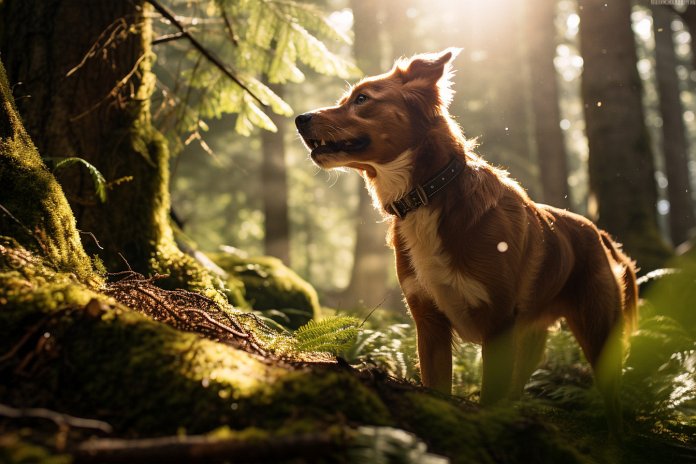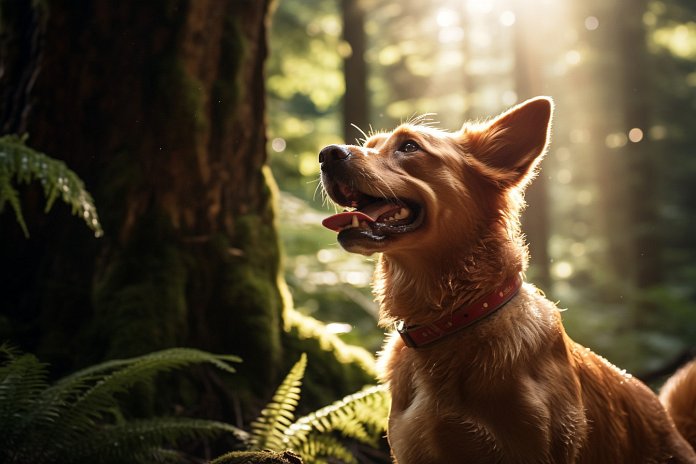
Dogs are fascinating animals with a unique ability to understand and respond to humans. But how do they do it? What senses do they rely on? Specifically, how are they so good at detecting our emotions?
It’s truly amazing when dogs seem to know exactly how their owners are feeling. But do they really understand our emotions? Dogs’ curiosity in new situations is also intriguing. Sometimes they react excitedly when meeting new people, while other times they appear hesitant. How do dogs decide whether they like someone? Can they use their sense of smell to pick up on adrenaline?
Signs of a Dog Smelling Adrenaline
A dog’s sense of smell is their most powerful sense. They rely on their sense of smell to familiarize themselves with new places and people. This heightened sense of smell allows them to detect various things, including potential threats.
When people feel nervous, angry, or scared, they release adrenaline, which leads to slight sweat production. Dogs can quickly pick up on this change. To better serve their owners, dogs can detect specific and subtle scents that humans are unable to detect.
There are certain signs that indicate a dog can sense when someone is scared. These reactions vary depending on the dog’s personality and breed. Some dogs become defensive, standing by their owners, barking, and sniffing more. They remain on high alert until they confirm that there is no immediate threat.
Other dogs respond to someone’s distress with fear of their own. If they sense anger, they may become scared themselves. Fearful dogs typically display signs such as a lowered tail, lowered ears, and a lowered head.
To determine if a dog is scared, it’s important to pay attention to their body language signs.
Body Language
Here are some signs that dogs exhibit when they are smelling adrenaline:
– Alertness
– Barking
– Dropping of the ears
– Increased sniffing
Other Signs
Here are additional signs that may indicate a dog is smelling adrenaline:
– Standing in a defensive posture
– Staying close to their human
– Displaying aggressive behavior
The History of Dogs’ Sense of Smell
A dog’s sense of smell has been their most important sense for thousands of years. It has allowed them to form a closer bond with humans and predict potential threats. Dogs have learned to associate the smell of adrenaline with dangerous situations. Therefore, when they detect adrenaline, they prepare themselves for potential danger.
This sense of smell has evolved over the past 15,000 years. Dogs descended from wolves, which were the first animals to be domesticated by humans. Initially, humans and wolves lived separately in the wild. However, they discovered that they could help each other. Wolves assisted humans in hunting and protecting their communities, while humans provided them with food and shelter. This mutually beneficial relationship led to a stronger bond.
Wolves that were better at predicting and responding to situations grew closer to humans. As their traits were passed down through generations, wolves began to resemble the dogs we know today. Different breeds of dogs were selectively bred for different purposes, such as hunting, protection, or companionship.
These dogs now use their sense of smell to understand humans and detect distress.
The Science of Dogs’ Sense of Smell
Dogs possess an exceptional ability to detect specific scents. While humans may think they have a good sense of smell, dogs surpass us with their 200-300 million smell receptors, compared to our mere 6 million.
Over thousands of years, dogs have learned to associate different smells with different situations, enabling them to understand human needs. When dogs effectively respond to their owners, their bond strengthens further.
Dogs have a specialized part of their brain dedicated to processing smells, which is 40 times larger than ours.
Training Dogs to Smell Adrenaline
Dogs are highly intuitive animals, capable of sensing things humans cannot. While they develop many social behaviors naturally, their skills can be enhanced through training. Dogs can be trained to respond to various situations in specific ways.
Even from birth, dogs rely on their sense of smell as their primary sense. While their eyesight and hearing develop later on, their sense of smell is immediately functional.
This powerful sense of smell can be utilized to save lives. Dogs can be trained to detect drugs, weapons, and even low blood sugar in diabetics. These service dogs assist individuals in various ways.
However, your dog doesn’t need to be a service dog to respond to specific smells. To train your dog, expose them to the desired scent and guide them in performing the desired action. When your dog responds correctly to a specific scent, reward them with praise and treats.
It’s possible to train dogs to find specific scents through a process called “tracking.” This involves the dog following a scent trail to locate the source. Begin by exposing your dog to the scent you want them to learn, then command them to retrieve the item, even if it’s visible. Gradually hide the object over time, prompting your dog to rely on their sense of smell. Provide positive reinforcement and encouragement when they successfully retrieve the item.
Consistent and regular training sessions are key to teaching your dog new skills. Through training, you’ll not only enhance their abilities but also strengthen your bond and understanding with your furry companion.
“Unlocking the Hidden Power of a Dog’s Nose: Smelling Adrenaline and Strengthening the Human-Canine Bond”

Tips & Things to Know
1️⃣ Dogs have a strong sense of smell and can pick up on specific scents, including adrenaline. They can detect when someone is nervous, angry, or scared based on the scent of adrenaline that is released. Pay attention to your dog’s body language, such as alertness, barking, ear dropping, and increased sniffing, to determine if they are sensing adrenaline.
2️⃣ Dogs have evolved over thousands of years to develop a closer bond with humans and to better predict and respond to situations. This evolution has resulted in dogs having a highly developed sense of smell, with 200-300 million smell receptors compared to humans’ 6 million. Dogs use their sense of smell to understand humans and to detect when they are distressed.
3️⃣ Dogs can be trained to respond to specific scents, including adrenaline. This can be useful in various situations, such as detecting drugs, weapons, or low blood sugar in diabetics. Training your dog to respond to specific scents involves exposing them to the scent and rewarding them when they respond correctly. Consistent and regular training sessions are important for teaching your dog new skills and strengthening the bond between you and your dog.
Frequently Asked Questions, Answered ✅
1. What senses do dogs rely on the most?
– Dogs rely most on their sense of smell, which is their strongest sense.
2. How do dogs determine whether they like someone?
– Dogs use their sense of smell to determine whether they like someone. They can smell specific scents, including adrenaline, which helps them make judgments about people.
3. What are the signs that a dog is smelling adrenaline?
– Signs that a dog is smelling adrenaline include increased alertness, barking, ears dropping, and increased sniffing.
4. How did dogs’ sense of smell evolve?
– Dogs’ sense of smell evolved over the last 15,000 years, as dogs and humans formed a reciprocal relationship. Dogs with better abilities to predict and respond to situations grew closer to humans, leading to the evolution of their sense of smell.
5. Can dogs be trained to respond to specific scents, like adrenaline?
– Yes, dogs can be trained to respond to specific scents, including adrenaline. Through consistent training and positive reinforcement, dogs can learn to associate scents with specific actions or behaviors.